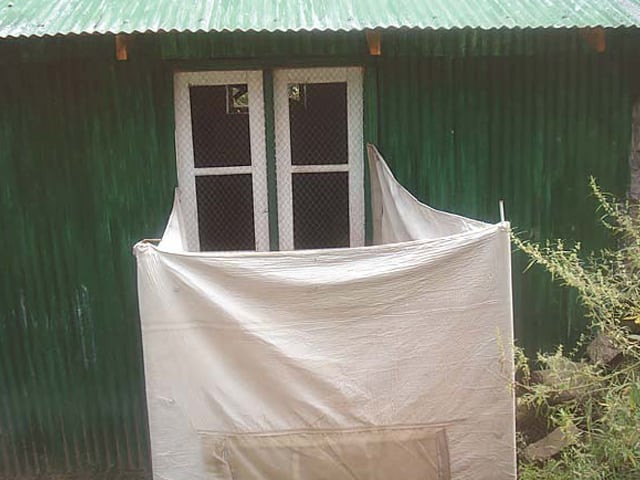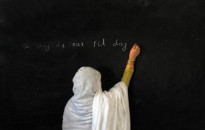Comment: Chakwal schoolchildren forced to defecate in the open
Lack of toilet facility forces schoolchildren to defecate in the open.

Recently an organisation working to promote sanitation approached the Chakwal’s Executive District Officer, Education, persuading him to issue a circular on the functioning of public school toilets. “Oh, Now I will be occupied with things like these?” the EDO frowned. “We are left with no other option to motivate teachers,” the manager of the organisation responded.
A survey undertaken by the organisation had revealed that most public school toilets were either locked or blocked and children were resorting to the practice of open defecation.
Convinced soon, the EDO circulated the unusual order, warning school heads of action if they failed to address the problem. The organisation’s manager said that campaigns and awareness sessions fall flat on government teachers’ ears and they act – even on common sense matters – only when they receive official circulars.
It has been observed that public schools cry for basic amenities but fail to keep them neat and functional. Unutilised school toilets turn dangerous and scary. For instance, during monitoring of school sanitation programme, I once encountered snakes in a girls’ primary school. On another occasion wasps stung all over my face as soon as I opened an abandoned toilet in a girl’s school.
During school visits, especially in rural areas, blocked toilets are a common sight. At places, toilets are also being used as makeshift stores and kitchen to prepare break time tea.
During the past decade or so, member assemblies and local and international development agencies have done much to provide water and flushable toilet blocks in schools. Sadly, most of these toilets are not accessible to children. Teachers make use of the facility but do not allow children, who fetch them water for cleaning. “They make the toilets dirty.” As a result, children can be seen hiding behind the bush or going up into the hills to relieve themselves.
Girls face much trouble in this regard. They “hold on” until the passersby move away. During school life girls reach their puberty, a subject familiar to more than half of the population of this country but nobody seems to care where do girls change and dispose of their padding. Shame on those who run and lead such schools! It is they who need education.
On many occasions, I have asked ignorant and poor rural parents why they send children to private schools when public schools are offering free of cost education, the answer – more or less – is the same every time, “They will at least learn some ways of life.”
To many of us adults, using toilet is not something we spend much time thinking about, we take it for granted. But this is a matter of life and death. Pooping in the open rather in a toilet undermines not only young children’s dignity but makes them vulnerable to oral-faecal transmission. One gram of human faeces can contain 10 million viruses, 1 million bacteria, 1,000 parasite cysts and 100 parasite eggs. These children are at a greater risk contracting diarrhoea, hookworm, guinea worm disease and bilharzias.
The World Health Organisation estimates that 40 per cent of diarrheal cases are picked up at school, and globally the disease is responsible for the deaths of 4,000 children each day. Many more are irreversibly debilitated and stunted by illness during their early years. Children in developing countries lose 272 million school days due to diarrhoea. Pakistan continues to bear a loss of around Rs80 billion each year for diarrhoea treatment. Health experts say the impact of diarrheal disease in children under 15 is greater than the combined impact of HIV/AIDS, malaria, and tuberculosis.
Such diseases burden the economy and contribute to children’s absenteeism and dropout from schools, especially of girls.
An essay on cleanliness has been a standard question in school exams that you also might have attempted each year. And often you would have heard the citation, “Cleanliness is half of the faith.” But as a fact, our schools and their populations are not at all clean. Even today they are the breeding grounds of diseases the world has long gotten rid of.
Published in The Express Tribune, December 17th, 2010.



















COMMENTS
Comments are moderated and generally will be posted if they are on-topic and not abusive.
For more information, please see our Comments FAQ